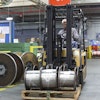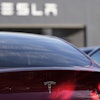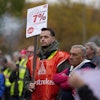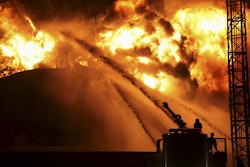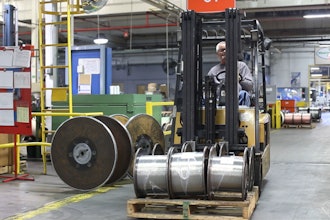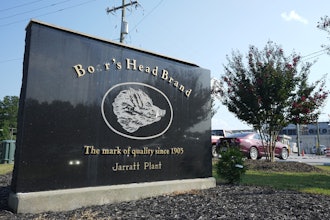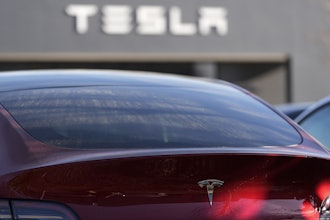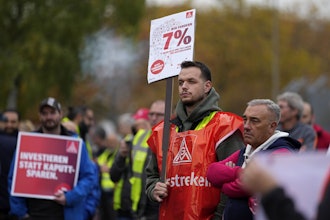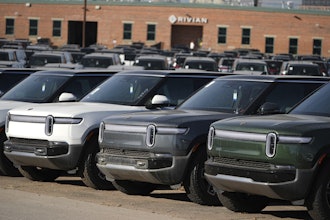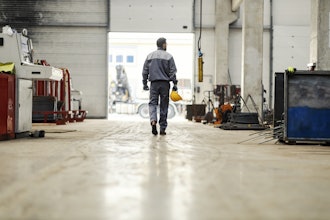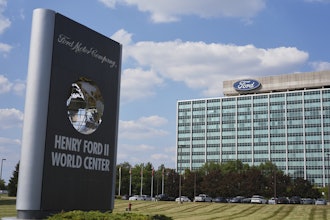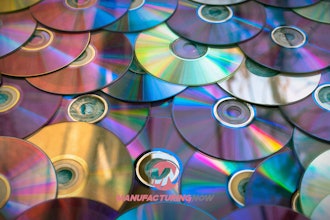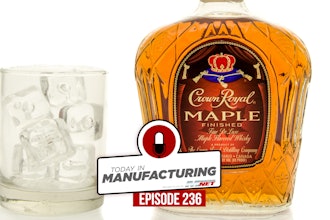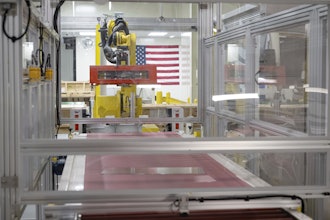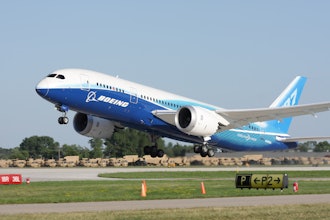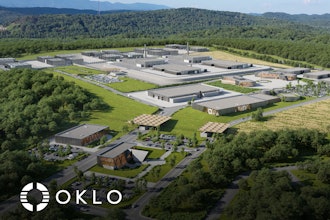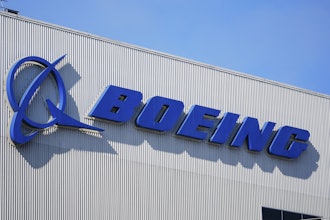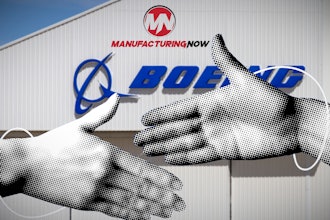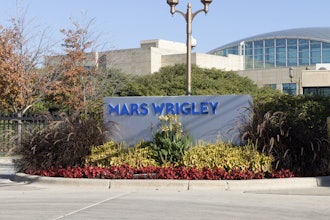This article originally appeared in the October print issue of IMPO.
Any of the most high tech and automated manufacturing facilities in the world depend on a ubiquitous, and seemingly mundane object: a bicycle.
Or more accurately in most cases, a tricycle. Or even a tricycle built for two.
In an old-school, three story, brick factory in Queens, NY, you’ll find Worksman Cycles. The building looks much like it did generations ago, aside from the murals covering the exterior. Original blue glass windows filter the light, and massive doors and windows keep the facility cross-ventilated, even on a hot July day.
In this unassuming facility, the team behind Worksman Cycles builds industrial bikes and trikes that are used in some of the largest plants in the world, including Ford, Boeing and Lockheed Martin.
The company grew from humble beginnings, when in 1898 Morris Worksman opened a dry goods shop, located on the very footprint of the World Trade Center. Bicycles, at the time, were a new technology, and in 1902 Morris got into the burgeoning business.
“Morris Worksman made an alternative form of transportation, because horses were expensive to buy, maintain and left unwanted byproducts,” says Bruce Weinreb, director of marketing and design at Worksman Cycles. “And here we are, 115 years later, and we want to replace powered cars inside factories because they are expensive to buy, maintain and create unwanted byproducts.”
The technology that Worksman Cycles is replacing has changed drastically, but what they are using to replace it has stayed almost the same.
These industrial bikes and trikes are found in the largest factories. “Our customers look like the Who’s Who of all of the big companies you’ve ever heard of. The bigger they are, the more they need us,” says Wayne Sosin, president of Worksman Cycles.
In general, a manufacturing facility needs to be at least 100,000 square feet to really consider the benefits of a trike, says Sosin. They are used to transport workers and materials around massive facilities in a more efficient manner.
“Management has to realize that when workers are walking the length of a football field three times a day, it’s completely unproductive,” says Sosin. Using a bike is a more efficient and ergonomic mode of transportation than walking, and it can save employers time and money. Bikes are also much less expensive than purchasing motorized vehicles, and they can help improve the fitness level of factory workers, according to Sosin.
Building the Bikes
One of the greatest day-to-day challenges for Worksman Cycles is the physical layout of their building. Ironically, their own product won’t even help them get around the three story factory.
The workflow starts on the main floor, where much of the metal prep for the frame fabrication is completed, including stamping, cutting and bending. Then, the parts head up to the third floor in huge bins and make a logical progression downward, eventually resulting in a fully assembled and ready-to-ride trike.
The key feature that makes a Worksman tricycle different than others on the market is the lug, of which there are several on every bike. First, brass is melted, and when it hardens, it becomes one solid structure. “There is no way to automate this or do it robotically. It’s hand work. There are only us and high-end road bikes that use lugs — ours are much more industrial,” says Weinreb.
The brass is melted into a fitting, and the frame is tacked by the first welder, to be finished by the next. “Start to finish, the frame fabrication far and away takes the most time. They’re doing the metal prep, machining and welding,” says Weinreb. In fact, up to 90 percent of the production time for each bike is spent welding.
Once the bike is welded, it’s on to painting. The painting method at Worksman Cycles is very traditional. Wet paint is sprayed on and then baked in an oven. The oven now runs at a much lower temperature as technology has improved, but the method is otherwise essentially unchanged. A bicycle frame can be painted in about one minute, and a tricycle frame in about three. Once painted, the bikes bake in batches in the oven for an hour.
The Mover, the companies most popular industrial tricycle, is available in three standard colors, but can also be customized to any color a company requests. “When we sell them to Lowe’s, for example, we paint them in blue that matches the Lowe’s color — it gives them a little bit more ownership of their own bike,” says Sosin.
Once the frame is painted, wheels are added. Workers balance the wheels to keep them from wobbling by tightening and loosening spokes. And these wheels are heavy. Two wheels can weigh as much as an entire high-end race bike.
“Our bikes have to work every day. If your bike at home doesn’t work, you can’t go for a ride or you need to take the bus. If our bikes go down, it’s a big deal. It stops processes and takes resources away from factories,” says Weinreb. At Worksman, the bikes and trikes are designed to be super simple so they are easy to maintain and always work.
After the wheels are mounted, tires are added. Some of the tires are done by machine, but Worksman’s greatest tire asset is a man who’s been at the facility for longer than Sosin can remember — Imran Khan, a 20-year veteran who is able to put on tires in just 45 seconds with his hands, no tools required.
While the bikes have remained much the same over the years, Worksman Cycles has included some tech updates, like a new tire option.
“We used to have a rubber tire that felt like a hockey puck,” says Sosin. “Now we use a styrene tire; it bounces a little bit and has a little more give to it. In a metal fabrication plant, they have scraps on the floor that would rip up a normal tire. It’s a good way to eliminate maintenance.”
Longtime customers often know exactly what they want when they place an order with Worksman Cycles. But even perennial customer Boeing has changed up their order over the years to include recent advancements like LED-lit pedals to improve the safety of their trikes.
How’s Business?
For the people at Worksman, the path forward is about staying the course. Trends around them have changed, as plants become more automated and many manufacturers move abroad, but they have a popular product that they are standing by. To compete, they focus on customer engagement and customization.
“We are not a high volume operation; this is not a high volume business for anyone,” says Sosin. “So why not personalize it and give a customer exactly what they want?” Every order of bikes that comes out of the shop looks different, and it’s more than just paint. Wheels can be hollow or solid, trikes can have one seat or two, they can pull trailers and they can store supplies in baskets. The company offers a menu of options and customers can pick exactly what they want.
And if a company is thinking about transitioning to bikes or trikes, experts at Worksman are happy to help consult on which products would be best for their factory.
But business for Worksman Cycles isn’t without its challenges. Specifically, success means contending with how the company should grow to meet increased demand for its products.
Thus far, Worksman has been able to operate successfully and efficiently in its New York location. “We had the good foresight to purchase our building in 1979. This has allowed us to maintain competitive pricing while resisting the temptation of lower facility leases elsewhere,” says Weinreb. “But now we face the challenge of how to grow as we have outgrown our building.”
While the company is considering a site relocation to help address this space challenge, they are committed to staying in the United States. “We’re hoping to encourage other manufacturers to not run away.”
The folks at Worksman Cycle are strong believers that American manufacturers can’t just talk the talk, they need to walk the walk. As manufacturing companies leave the U.S., there is a ripple effect that touches every other industrial manufacturer — whether you’re making industrial shelving, compressed air dryers or lift trucks. If you’re not supporting other American manufacturers, you’re shooting yourself in the foot.
Luckily, some manufacturers are coming back to the United States, or even moving here for the first time. “The new Volkswagen plant contacted us in Tennessee,” says Weinreb. “It’s going to be an ultra state-of-the-art, but they are using our trikes.”
Everything goes in cycles.
